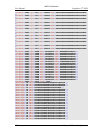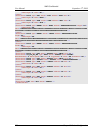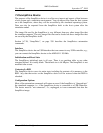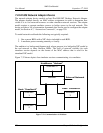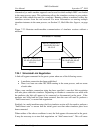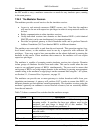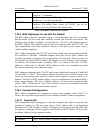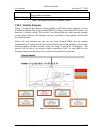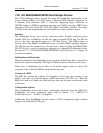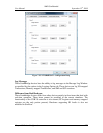
AMD Confidential
User Manual September 12
h
, 2008
122 Chapter 7: Device Configuration
the NIC model to retry a mediator connection or search for any simulator peers, running
in the same process.
7.24.2 The Mediator Daemon
The mediator provides several services for the simulator session:
Access to real network resources (DHCP servers, etc.). Note that the mediator
will need to be run with supervisor privileges in order to snoop network traffic on
its host.
Bridge communication to other simulator sessions.
Group individual sessions into domains so that identical BSD‟s (with identical
MAC/IP pairs) can be run simultaneously in separate domains.
Provides an optional gateway to block broadcast traffic and to perform Network
Address Translation (NAT) on identical BSD‟s in different domains.
The mediator can route traffic to and from the real network. This operation requires low-
level kernel actions, so the mediator must be run by a supervisor with sufficient OS
privileges. Users may want to have one machine on the subnet dedicated to running the
mediator in this mode. Client machines that connect to the mediator will not require
supervisor privileges.
The mediator is capable of grouping certain simulator sessions into domains. Domains
isolate groups of simulator sessions from each other. This can be useful when the user
wants to run replicated groups of BSD‟s simultaneously. The user need to ensure that
each group of BSD‟s are using unique domains in the mediator by passing an appropriate
connect string to the mediator or supplying it on the command line using the “-m” option,
see Section 5.1, Command-Line Arguments, on page 35.
The mediator can provide one or more gateways to isolate broadcast traffic from your
simulation environment. A gateway will perform NAT in order to ensure that BSD‟s in
different domains get their packets routed appropriately. The simulator sessions using the
mediator‟s gateway can continue to access network resources, but are essentially hidden
from the real network.
Table 7-9 shows command line switches that the mediator accepts:
Switch
Description
-p portNum
Dictates what port number the mediator will be listening on for
incoming traffic. It specifies the base port address used by the
mediator, and port usage is based off of this number. The
mediator's listening thread uses portNum + 4.
-l
Lists possible host adapters that the mediator can use to snoop real
network traffic.
-s
Tells the mediator to snoop real network traffic. Requires
supervisor privileges.
-d DeviceNum
Tells the mediator which host adapter to use when snooping real





